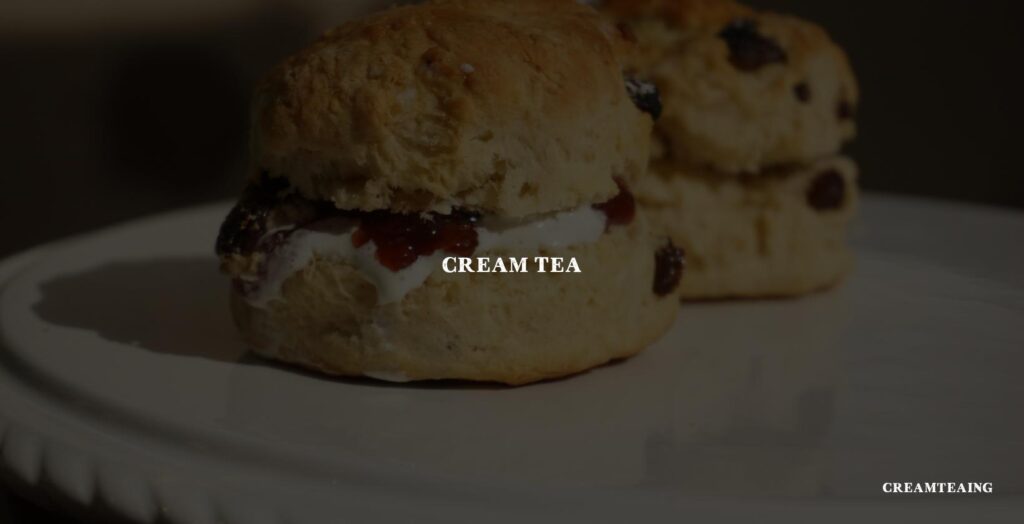Cream tea is a delightful British tradition that's all about indulging in the simple pleasures of warm scones, clotted cream, and strawberry jam, usually accompanied by a pot of freshly brewed tea. Originating from the South West of England, it's a treat that has become synonymous with leisurely afternoons. Whether you call it Devonshire tea or Cornish cream tea, the essence remains the same: a moment of relaxation and enjoyment.
The ritual involves splitting a scone in half, layering each piece with thick clotted cream, and topping it with a dollop of sweet jam. It's a combination that's hard to beat and has been cherished across England, especially in counties like Devon and Cornwall. While there are variations, such as the addition of butter or the choice between jam first or cream first, the core experience of a cream tea remains a beloved part of British culinary culture. So next time you're looking for a cozy afternoon snack, consider the classic cream tea – it's a small feast for the senses that never goes out of style.
The History of Cream Tea
The story of cream tea is as rich and layered as the clotted cream spread on a warm scone. This quintessentially British treat has its roots deeply embedded in the customs and traditions of the English countryside, particularly in the South West regions of Devon and Cornwall.
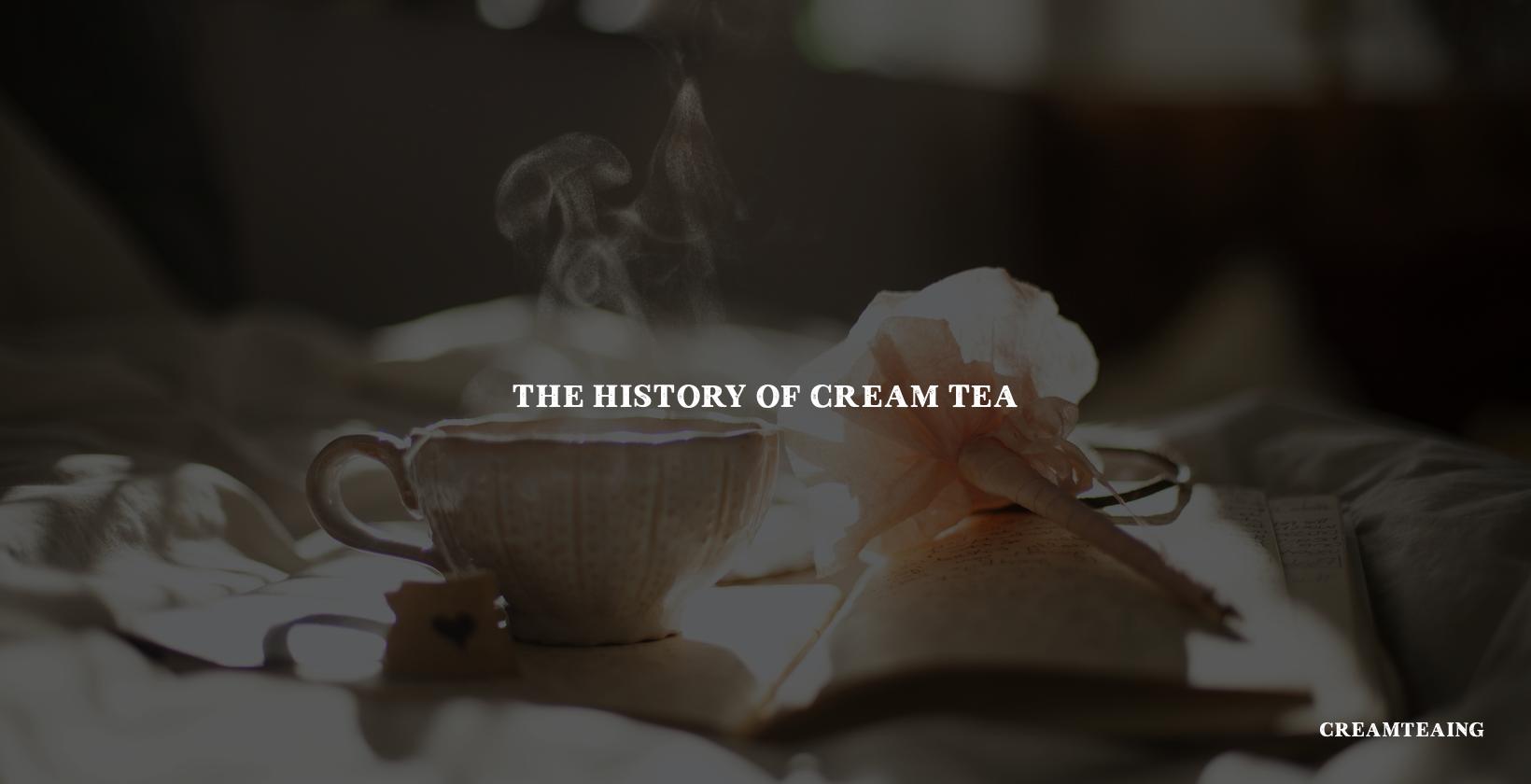
Origins and Early Evidence
The exact origin of cream tea is a bit of a mystery, with both Devon and Cornwall claiming the honor. Historical evidence suggests that the tradition of eating bread with cream and jam dates back to the 11th century at Tavistock Abbey in Devon. Monks would treat themselves to a rustic version of cream tea, with freshly baked bread, clotted cream, and local jam.
Cream Tea in Literature
The term "cream tea" itself first appeared in the 1960s, but the concept was mentioned much earlier. A newspaper cutting from 1931 refers to a meal that closely resembles what we know today as cream tea, indicating that the tradition was well established by then.
Regional Variations
Devon and Cornwall have their own unique ways of enjoying cream tea. In Devon, you split the scone in half, cover each side with cream, and then add a dollop of jam. In Cornwall, the process is reversed: jam first, followed by cream. These regional distinctions are taken quite seriously and are a part of the local identity.
Modern-Day Cream Tea
Today, cream tea is enjoyed far beyond the rolling hills of the South West. It's a beloved feature in tea rooms across England and has even made its way into the hearts of people in various parts of the Commonwealth. The simple pleasure of a hot cup of tea accompanied by scones, clotted cream, and strawberry jam continues to be a symbol of comfort and hospitality.
Cream tea is more than just a snack; it's a pause in the day, a moment to relax and indulge in a little bit of tradition and sweetness. It's a connection to history, a nod to the past, and a treat that continues to evolve while still holding on to its classic charm.
Cream Tea vs Afternoon Tea
When it comes to quintessentially British traditions, cream tea and afternoon tea are often mentioned in the same breath. However, they are not the same thing. Let's dive into the delightful differences between these two British staples that are both steeped in tradition yet distinct in their offerings.
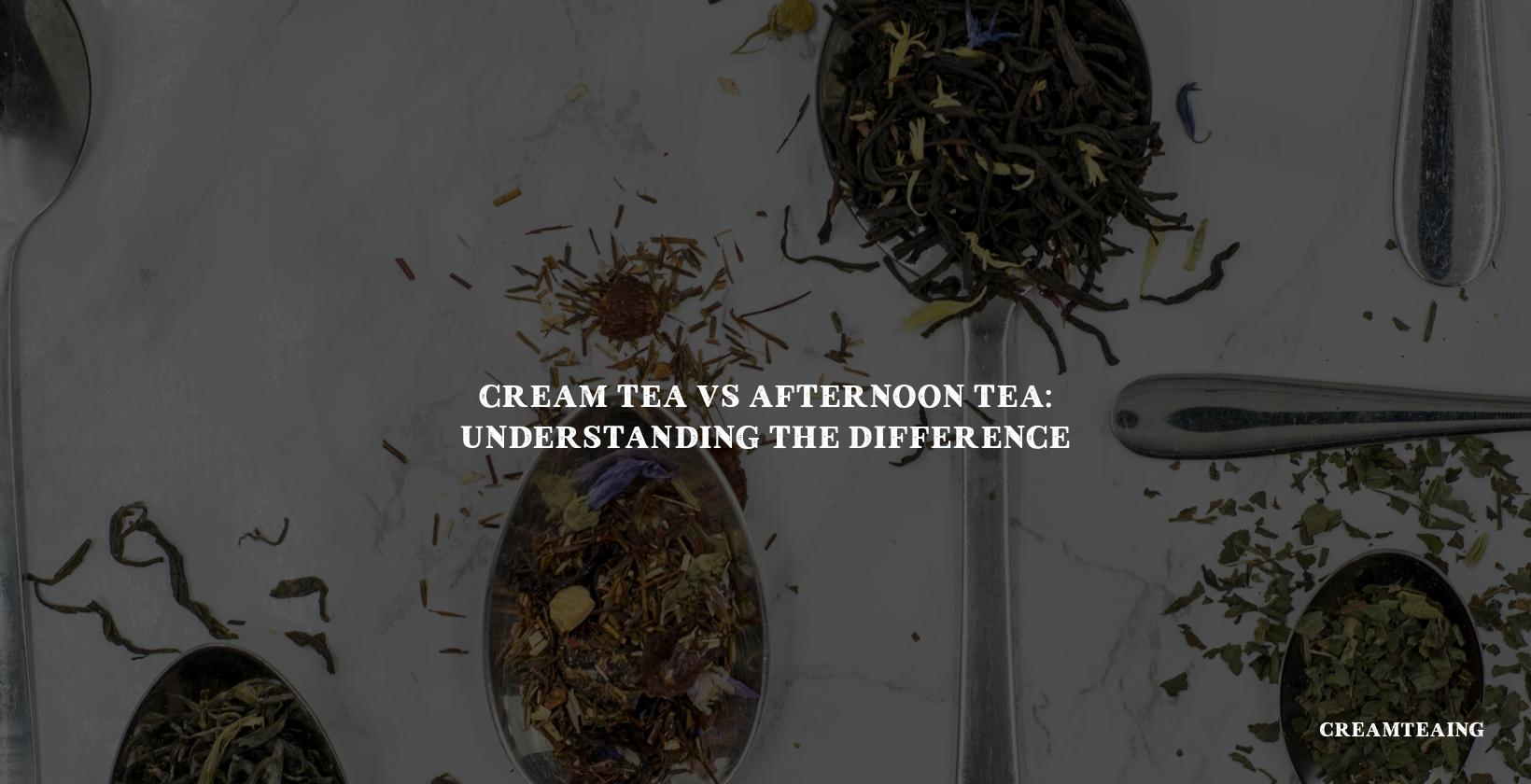
What is Cream Tea?
Cream tea is a simple, yet indulgent treat. It typically consists of scones, served warm with clotted cream and strawberry jam. A pot of hot tea, usually a robust blend like Earl Grey or English Breakfast, accompanies this trio. The focus here is on the scones and the act of slathering them with cream and jam. It's a snack-sized indulgence that's perfect for a mid-afternoon pick-me-up.
The Afternoon Tea Experience
Afternoon tea, on the other hand, is a more elaborate affair. It's not just a snack; it's a meal in itself. Think of a multi-tiered cake stand filled with a variety of finger sandwiches, scones, pastries, and cakes. It's often enjoyed in a more formal setting, like a nice hotel or tea room, making it a social event that can last for a couple of hours.
Scones: The Common Thread
While both cream tea and afternoon tea feature scones, the way they are presented and enjoyed differs. In cream tea, the scone is the star of the show. In afternoon tea, it's part of an ensemble cast of treats.
Timing and Tradition
Cream tea is a flexible option that can be enjoyed anytime you fancy a scone and a cuppa. Afternoon tea is traditionally taken between 3 and 5 pm. It was originally designed as a stop-gap between lunch and dinner and has evolved into a leisurely way to spend an afternoon.
Choosing Your Tea-Time Adventure
So, which one should you choose? If you're after a light snack and a quick tea break, cream tea is your go-to. But if you're looking to indulge in a leisurely and more substantial meal with friends or family, then afternoon tea is the perfect choice.
In essence, cream tea is a minimalist's afternoon tea – a pared-down version for those who want the pleasure of tea and scones without the full spread. Both have their own charm and time and place, so why not try both and decide which one you prefer?
The Essential Components of Cream Tea
When it comes to cream tea, the simplicity of its components is key to its charm and enduring popularity. At its heart, cream tea is a delightful combination of scones, clotted cream, and jam, typically served with a pot of hot tea. Let's break down these quintessential elements that make up this beloved British tradition.
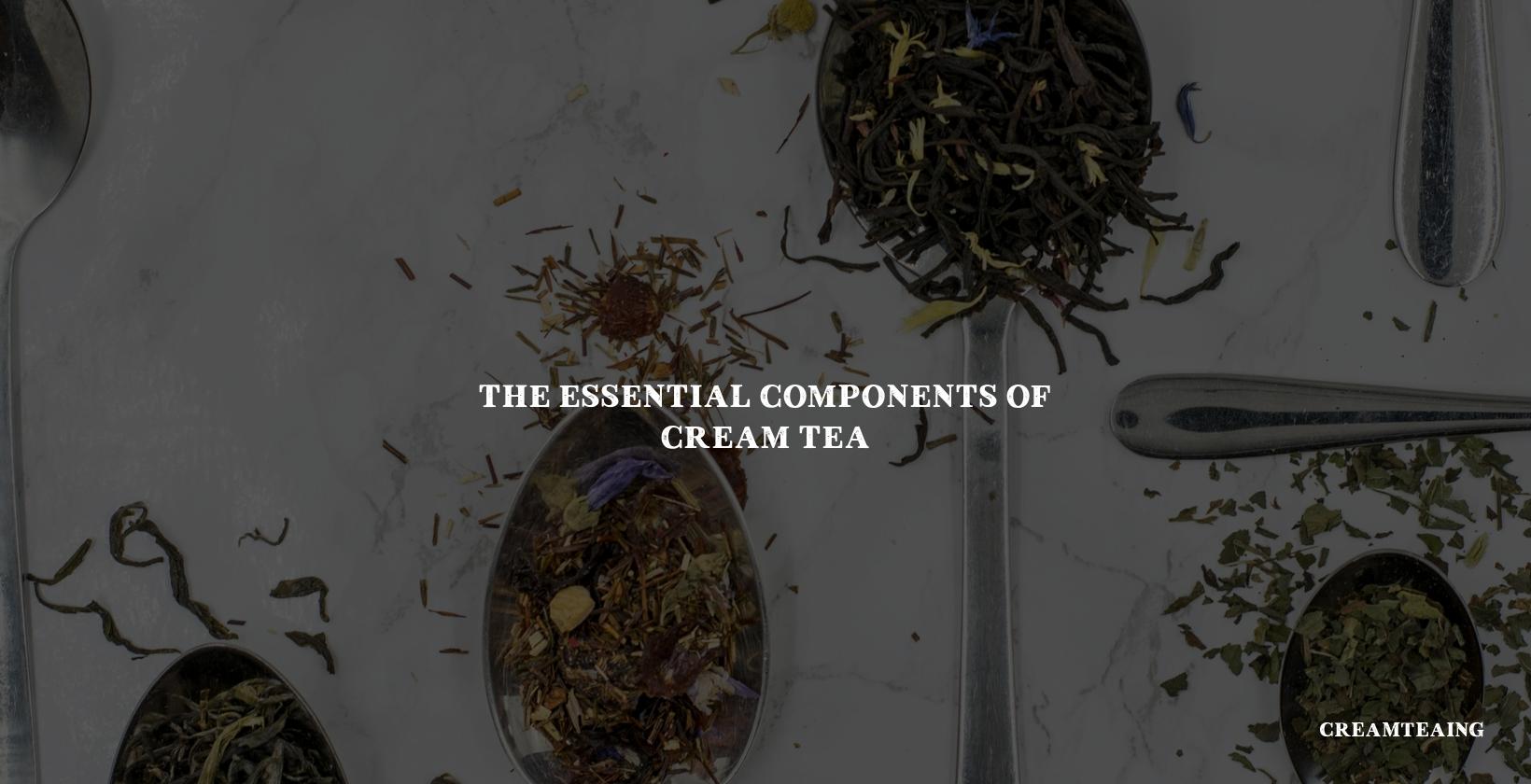
Scones: The Foundation
The scone is the cornerstone of any cream tea. These light and fluffy baked goods are slightly sweet and provide the perfect base for the toppings that follow. They are best enjoyed warm, fresh out of the oven, with a golden-brown crust that gives way to a soft, crumbly interior. While recipes vary, the classic scone is a balance of flour, butter, sugar, baking powder, and milk or buttermilk, mixed gently to achieve that signature tender texture.
Clotted Cream: The Luxurious Spread
Clotted cream is the luxurious heart of cream tea. This thick, rich cream is made by heating full-fat milk and then allowing it to cool slowly, resulting in a spread that's somewhere between butter and whipped cream. It has a decadent, silky texture and a subtle sweetness that complements the scones perfectly. In cream tea, clotted cream acts as a bridge between the scone and the jam, adding a layer of indulgence to each bite.
Jam: The Sweet Touch
No cream tea is complete without a dollop of jam. Strawberry jam is the traditional choice, with its vibrant color and balance of sweetness and acidity. The jam adds a fruity burst that cuts through the richness of the clotted cream and brings a refreshing contrast to the dish. While strawberry is the classic, other fruit jams like raspberry or blackcurrant can also be used to add variety and personal preference to the experience.
Tea: The Perfect Pairing
The final, and equally important, component of cream tea is the tea itself. A strong brew of black tea, such as Earl Grey or English Breakfast, is typically served hot and can be enjoyed with milk and sugar to taste. The robust flavors of the tea provide a warm and comforting counterpoint to the sweet and creamy scones, making it the perfect beverage to sip while savoring the treats.
In essence, the beauty of cream tea lies in the harmony of its simple components. Each element plays a crucial role in creating the overall experience, which is why it's cherished by many as a special treat that's both comforting and indulgent.
How to Set the Table for Cream Tea
Setting the table for cream tea is an art that combines tradition with personal touch. It's about creating an inviting atmosphere where the simple pleasure of tea and scones can be enjoyed to the fullest. Here's how to set the perfect table for a delightful cream tea experience.
Choosing Your Tableware
First, select a tablecloth that sets the mood. A crisp white linen or a floral pattern can add a touch of elegance. Place a centerpiece that complements the theme – fresh flowers or a small potted plant work beautifully.
Arranging the Table
At each setting, place a plate for scones and treats. To the right of the plate, arrange a knife for spreading jam and cream, and a spoon for stirring tea. A teacup and saucer should be positioned to the right of the plate, with the handle pointing to the right for easy access.
The Tea Setup
The teapot is the star of the show and should be placed where everyone can reach it. Accompany it with a milk jug and a sugar bowl with tongs or a spoon. If you're offering lemon, place a small dish with lemon wedges nearby.
Scones and Accompaniments
Warm scones should be served in a basket or on a tiered stand. Offer a selection of jams – strawberry is traditional, but feel free to include other flavors. Don't forget a bowl of clotted cream; it's essential!
Personal Touches
Finally, add some personal touches. Maybe use mismatched vintage teacups for a quirky vibe or tie a small ribbon around the napkin for a festive look. The key is to create a setting that feels special and welcoming.
The Perfect Tea Pairings for Cream Tea
When it comes to cream tea, the spotlight often falls on the scones, clotted cream, and jam. But let's not forget the silent hero of the hour – the tea itself! The right tea can elevate your cream tea experience from delightful to sublime. So, let's dive into the world of teas and discover the perfect pairings for your cream tea indulgence.
Choosing Your Tea
The classic choice for cream tea is a robust black tea. Its strong flavors stand up well against the rich cream and sweet jam. Here are some top picks:
- Assam: Bold and malty, Assam tea is a powerhouse that pairs beautifully with the creamy texture of the scones.
- Darjeeling: Often referred to as the 'champagne of teas', its delicate muscatel flavor complements the sweetness of the jam.
- Earl Grey: The citrusy notes of bergamot in Earl Grey cut through the richness and refresh the palate.
Herbal and Green Teas
For those who prefer something less traditional or caffeine-free, there are other fantastic options:
- Peppermint Tea: Its cool, minty freshness offers a delightful contrast to the warm, buttery scones.
- Green Tea: Choose a gentle Sencha or a slightly sweet Dragonwell for a lighter tea that cleanses the palate.
Making It a Match
To truly enjoy the tea with your cream tea, consider these tips:
- Strength: Brew your tea strong enough to complement the food. A weak tea might get overshadowed by the flavors of the food.
- Temperature: Serve the tea hot. It's not just about taste; holding a warm cup adds to the cozy experience.
- Milk or No Milk?: This is personal preference. If you like milk in your tea, go for it! It can soften the tannins in black tea and create a lovely balance with the food.
A Note on Brewing
Brewing tea is an art in itself. Here's a quick guide to getting it right:
- Water Temperature: For black tea, use boiling water. For green teas, slightly cooler water is best to avoid bitterness.
- Steeping Time: Black teas often need about 3-5 minutes. Green teas are best steeped for a shorter time, around 2 minutes.
- Loose Leaf or Bagged?: Loose leaf tea often offers better flavor and depth than bagged, but both can work well.
The Social Aspect
Remember, cream tea is as much about the company and conversation as it is about the food and drink. So, while you're sipping on that perfectly brewed cup of tea, don't forget to enjoy the moment and the people you're with.
Milk Before Tea or Tea Before Milk? The Debate Settled
When it comes to cream tea, the focus often falls on the scones, clotted cream, and jam. But let's not forget about the tea itself! A crucial part of this delightful British tradition is how you prepare your cuppa. And there's been a longstanding debate: Should you pour the milk before the tea, or should you pour the tea before the milk?
The Historical Pour
Historically, the order in which you added milk to tea was indicative of social standing. The finest china cups were used by the upper class, and they poured the tea first because their high-quality porcelain could withstand the heat. Those with lesser means used to pour milk first to prevent their lower-quality cups from cracking with the heat of the tea.
Modern Preferences
Today, the decision is less about social class and more about personal preference. Some tea lovers claim that pouring milk first allows for a more even mixing with the tea, while others argue that pouring tea first gives them better control over the strength and ratio of milk to tea.
The Taste Test
So, what's the verdict? Well, it turns out that the order might affect the flavor after all. Scientists have found that pouring milk into hot water causes the proteins in the milk to denature and affect the taste slightly. Pouring tea first and then adding milk preserves the natural flavor of the milk, leading to a smoother taste.
In the end, whether you're a 'milk-in-first' or a 'tea-in-first' person, it's all about what tastes best to you. The cream tea experience is meant to be relaxing and enjoyable, so go with what you prefer. Just remember, the key to a great cream tea is the quality of the ingredients and the company you share it with.
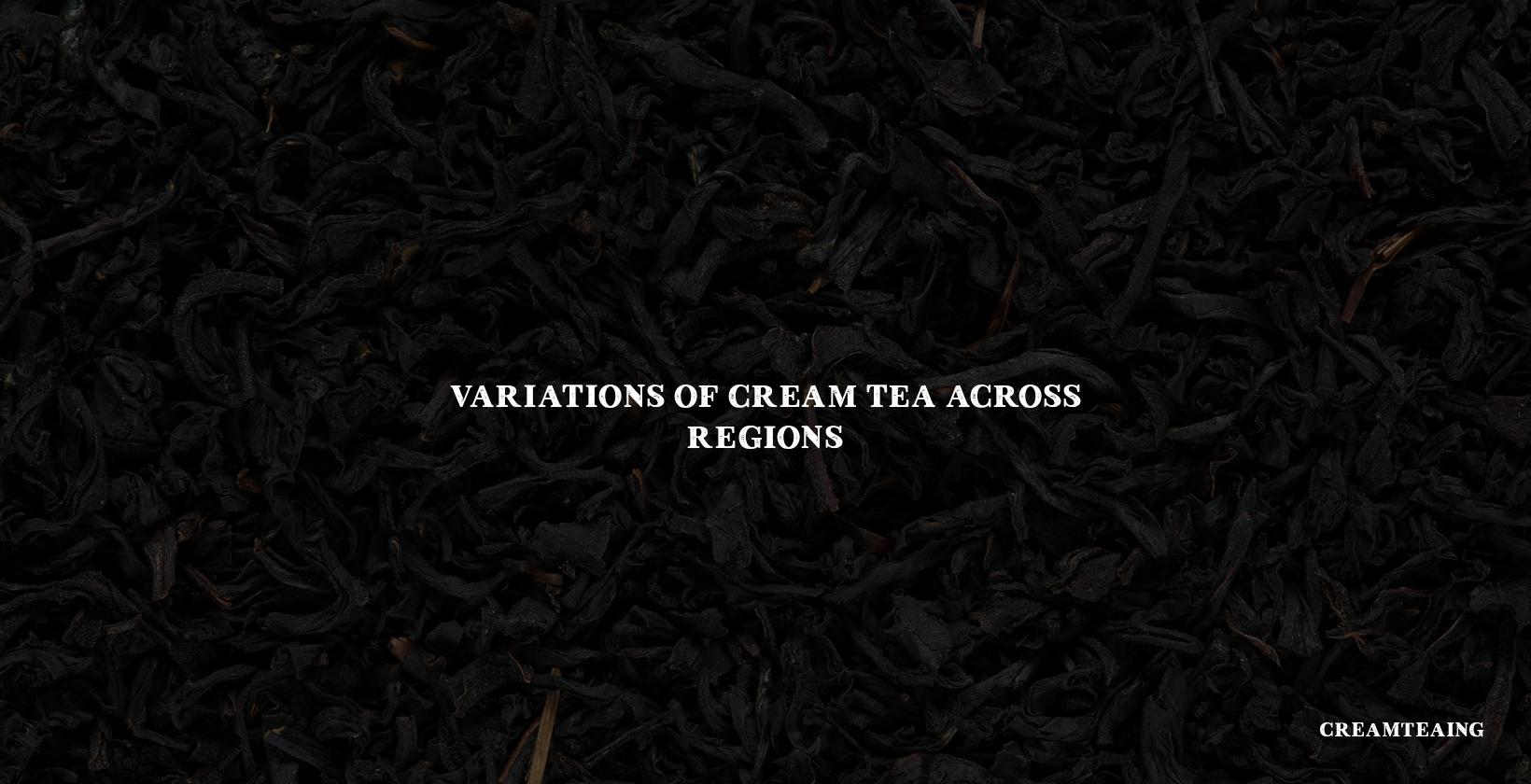
Variations of Cream Tea Across Regions
Cream tea, a delightful British tradition, has charmed its way into the hearts of many. While the core elements remain the same—scones, clotted cream, and jam—the regional twists on this classic treat add a fascinating layer of variety to the cream tea experience.
Devon vs. Cornwall: The Scone Debate
In Devon, the method is quite straightforward: split the scone in half, slather each piece with clotted cream, and top it with a dollop of strawberry jam. However, cross the border into Cornwall, and you'll find the order reversed—jam first, followed by cream. This seemingly small difference is a matter of great pride and tradition in each county.
London's Luxurious Touch
Moving to the capital, London's cream tea often comes with a touch of elegance. Here, it's not uncommon to find the addition of delicate pastries and finger sandwiches, turning a simple cream tea into a more decadent affair.
The Thunder and Lightning Variation
Venture into the West Country, and you might encounter the 'Thunder and Lightning' variation. This involves replacing the jam with golden syrup or honey, giving the cream tea a sweet and zesty kick that's as dramatic as its name suggests.
Cheese Scones: A Savory Spin
Some regions offer a savory version of the cream tea with cheese scones. Instead of sweet jam, these are served with chutney, providing a robust flavor that contrasts with the traditional sweet cream tea.
The Influence of Local Ingredients
Local ingredients also play a role in the variations of cream tea. In areas known for their fruit production, you might find a range of jams made from local berries, while coastal regions might offer sea salt-flavored clotted cream.
The Modern Cream Tea
Today's cream tea has also adapted to modern tastes and dietary requirements. Vegan and gluten-free options are becoming more common, ensuring that everyone can enjoy this delightful tradition.
In essence, the beauty of cream tea lies in its versatility. Whether you prefer the classic Devonshire method or the Cornish twist, the luxurious London style, or the unique regional variations, there's a cream tea to suit every palate.

The Cultural Significance of Cream Tea
Cream tea is more than just a delightful snack; it's a cultural icon that encapsulates the charm and tradition of English teatime. This simple pleasure has woven itself into the fabric of British life, becoming a symbol of hospitality and leisure that transcends generations.
A Symbol of Regional Pride
Across the counties of Devon and Cornwall, cream tea is a point of local pride. Each region fiercely claims the cream tea as their own, with slight variations in how they serve it—whether it's the cream or jam that hits the scone first. This friendly rivalry adds a layer of cultural identity to the cream tea, making it a topic of conversation and debate that can spark passion in locals and intrigue in visitors.
Cream Tea and Social Gatherings
Historically, cream tea has been associated with social gatherings and special occasions. It's common to see groups of friends and family members enjoying cream tea together in gardens, cafes, or at home. The act of sharing a pot of tea and scones is a bonding experience, a pause in the day to reconnect and indulge in each other's company.
The Modern Twist
In today's world, cream tea has adapted to modern tastes without losing its traditional roots. It's not uncommon to find innovative variations like the 'Thunder and Lightning' version, which includes honey or golden syrup, offering a new twist on the classic. This evolution shows the versatility of cream tea and its ability to remain relevant and beloved.
Cream Tea in Popular Culture
Cream tea often features in literature, film, and television, further cementing its status as a cultural staple. It represents a touch of elegance and a nod to a more genteel time, making it a popular choice for scenes depicting English customs and a refined way of life.
An Experience for All Ages
While cream tea has historical and traditional connotations, it's an experience that appeals to all ages. Young people are just as likely to enjoy the ritual of cream tea as their elders, proving that some traditions have a timeless appeal.
In essence, cream tea is more than the sum of its parts. It's a celebration of heritage, a moment of connection, and a testament to the enduring appeal of simple pleasures. It's a tradition that invites everyone to take a moment, sip a warm cup of tea, and savor the sweetness of life.
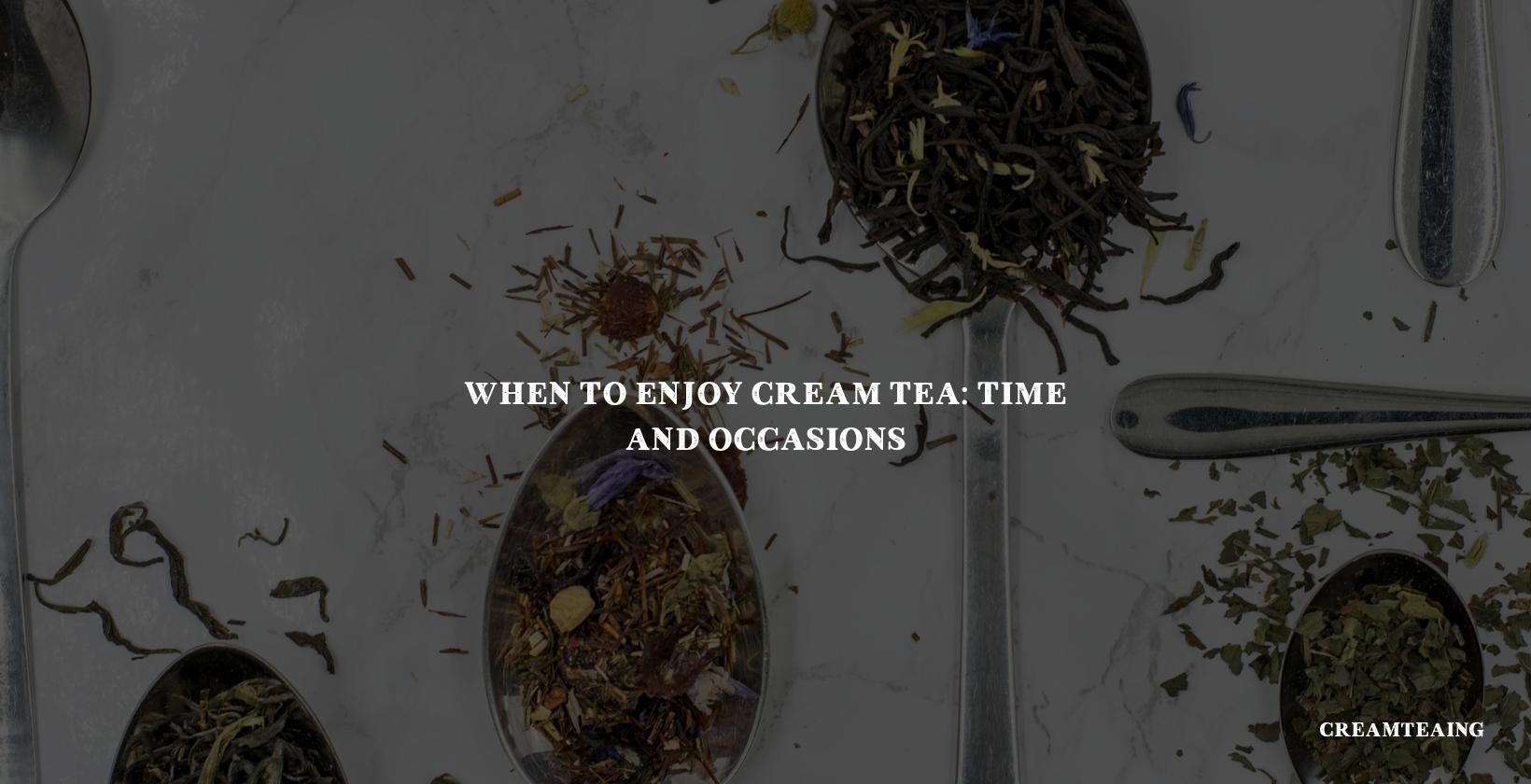
When to Enjoy Cream Tea: Time and Occasions
Cream tea is a delightful treat that's not just reserved for any single moment or occasion. It's a versatile indulgence that can be enjoyed at various times, making any day a little more special.
The Perfect Time for Cream Tea
Traditionally, cream tea is enjoyed in the afternoon, typically between 2 pm and 5 pm. This time frame is ideal as it sits comfortably between lunch and dinner, serving as a perfect pick-me-up to break up the day. However, the beauty of cream tea lies in its adaptability. Feeling peckish mid-morning? Why not have an early cream tea? Or perhaps as a sumptuous finish to a late brunch? The rules are not set in stone, and the right time for cream tea is whenever you feel like treating yourself.
Cream Tea for Special Occasions
While cream tea can be a daily delight, it also serves as a charming centerpiece for special occasions. Birthdays, anniversaries, or even just a catch-up with old friends can be made extra special with a spread of scones, clotted cream, and jam. It's a way to add a touch of elegance and celebration without the formality of a full afternoon tea.
Seasonal Cream Tea Gatherings
The changing seasons offer new opportunities to enjoy cream tea. A summer cream tea in a garden setting, with fresh, ripe strawberries, is a seasonal twist on the classic. In contrast, a winter cream tea by the fireside with warm scones can be incredibly comforting during the colder months.
Making Any Day a Cream Tea Day
Ultimately, cream tea is about savoring the moment and indulging in simple pleasures. Whether it's a lazy Sunday afternoon, a break from study sessions, or a reward after a long day, cream tea fits seamlessly into any day. It's a treat that's as much about the experience as it is about the food—a chance to slow down, relax, and enjoy the finer things in life.
So, grab your favorite teacup, bake (or buy) some scones, and make any day a cream tea day. It's a tradition that's easy to start and even easier to love.
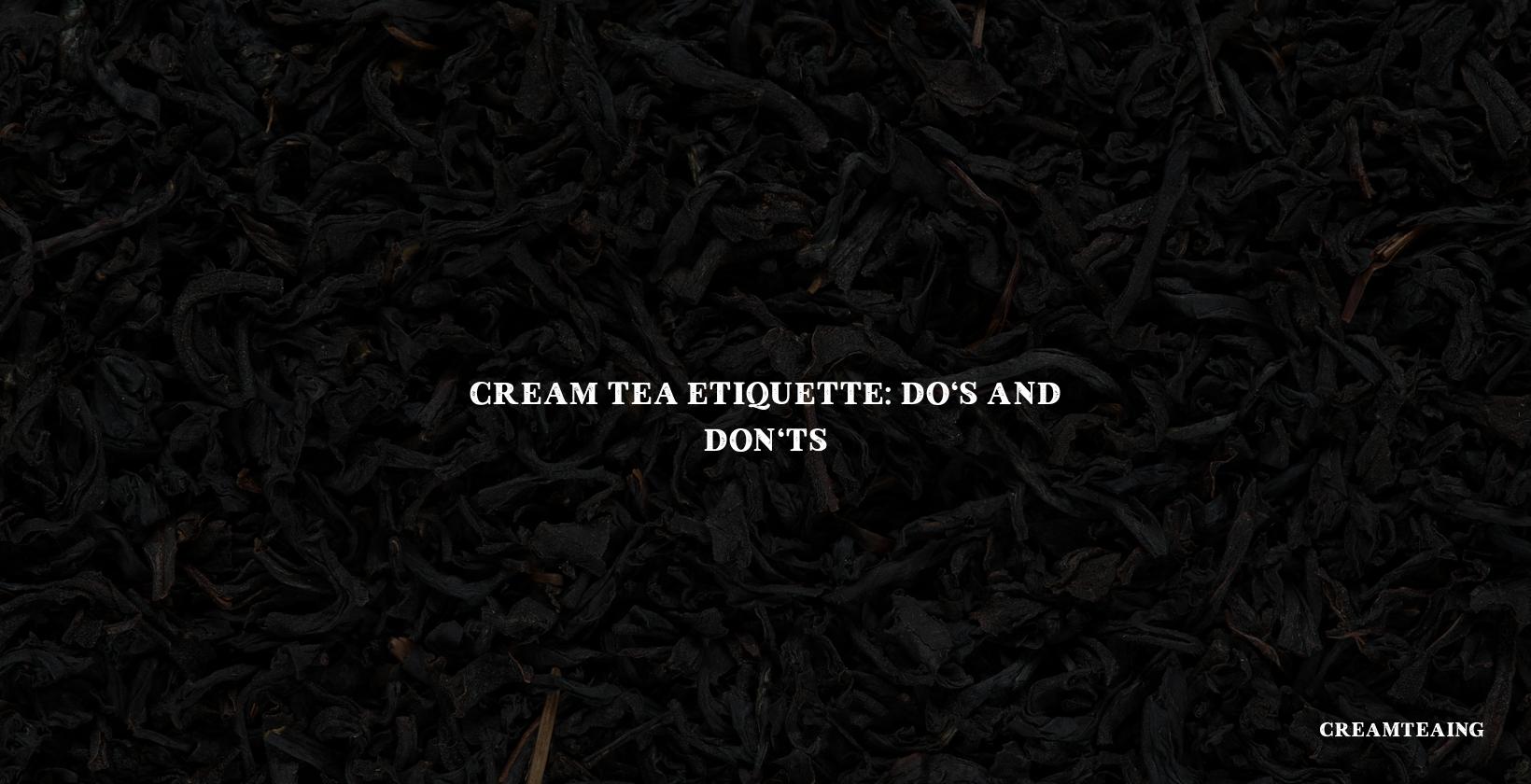
Cream Tea Etiquette: Do's and Don'ts
Indulging in a cream tea is one of life's simple pleasures, but even the most laid-back of traditions comes with its own set of etiquette rules. Whether you're enjoying this delightful treat at home or in a quaint tea room, here are some do's and don'ts to enhance your cream tea experience.
Do: Handle Your Teaware with Care
Tea time is a refined affair, so treat your teacups, saucers, and teapot with respect. Hold your cup by the handle and avoid clinking your spoon against it when stirring. When you're done, place your spoon on the saucer, not in the cup.
Don't: Overfill Your Cup
Pour your tea carefully to avoid spills. Leave some room at the top of your cup so you can add milk if you like, and so it's easier to sip without sloshing.
Do: Scone Etiquette
When it comes to scones, break them apart with your hands rather than cutting them with a knife. It's part of the charm! Spread each half with clotted cream first, then top with a dollop of jam. This is the Devon method, and it's widely accepted as the proper way to enjoy a scone.
Don't: Rush the Experience
Cream tea is meant to be savored, not rushed. Take small bites and sips, and enjoy the flavors and the company you're with. It's a time to relax and indulge.
Do: Mind Your Manners
Good manners go a long way. Say 'please' and 'thank you,' especially if you're sharing the cream tea experience with others. Pass items around the table rather than reaching across it, and remember to chew with your mouth closed.
Don't: Be Afraid to Ask
If you're unsure about anything, whether it's the type of tea on offer or how to eat your scone, don't hesitate to ask. It's better to ask and enjoy your cream tea correctly than to guess and miss out on the tradition.
Do: Dress for the Occasion
If you're at a tea room or a fancy hotel, dress smartly. You don't need to be in formal wear, but smart-casual attire will ensure you fit in with the cream tea setting.
Don't: Use Your Phone at the Table
Cream tea is a social event, so put your phone away and engage with your friends or family. Enjoy the break from technology and the chance to have real conversations.
Do: Enjoy the Local Variations
If you're traveling, take the opportunity to enjoy the local variations of cream tea. Each region might have its own twist on the tradition, and it's a great way to experience the local culture.
Don't: Forget to Compliment the Chef
If you're particularly impressed with the scones or the tea, don't hold back on your compliments. A simple 'These scones are delicious!' can make the day of the person who prepared them.
Protecting the Tradition: Cream Tea's Protected Status
In the world of culinary delights, cream tea holds a special place, especially in the hearts of those from South West England. But what makes this simple combination of tea, scones, clotted cream, and jam so special that it requires protection? Let's dive into the efforts made to safeguard the tradition of cream tea.
The Quest for Recognition
The journey to protect the authenticity of cream tea began earnestly in 2010. A passionate campaign was launched with the aim to grant cream tea the status of a protected delicacy under the European Union's Designation of Origin (PDO) rules. This would place cream tea in the same league as Champagne and Parma Ham, recognizing its unique regional identity.
Why Protect Cream Tea?
The reason behind this push for protection is simple: authenticity. Cream tea is not just a snack; it's a cultural icon that represents a region's history and traditions. By securing PDO status, the recipe, method, and regional ingredients used in cream tea would be preserved, ensuring that any cream tea labeled as such is made according to strict standards.
The Impact of PDO Status
Securing PDO status would have significant implications. It would mean that only cream tea made in South West England, using traditional methods and ingredients, could be called 'Devonshire' or 'Cornish' cream tea. This would help maintain the quality and reputation of the cream tea, preventing imitations that could dilute its heritage.
The Current Status
As of now, cream tea has not yet been granted PDO status, but the campaign has brought much attention to the importance of preserving culinary traditions. It has sparked conversations and raised awareness about the need to protect regional foods that are a source of pride and joy for local communities.
The Future of Cream Tea Protection
The quest to protect cream tea continues, with supporters hoping that one day it will receive the recognition it deserves. Whether or not it gains PDO status, the efforts to protect cream tea highlight the broader importance of preserving cultural heritage and supporting local producers.
In summary, protecting the tradition of cream tea is about more than just safeguarding a recipe—it's about honoring a piece of cultural identity that has been cherished for generations. It's a testament to the love and care that goes into making each cup of tea and each scone a delightful experience.
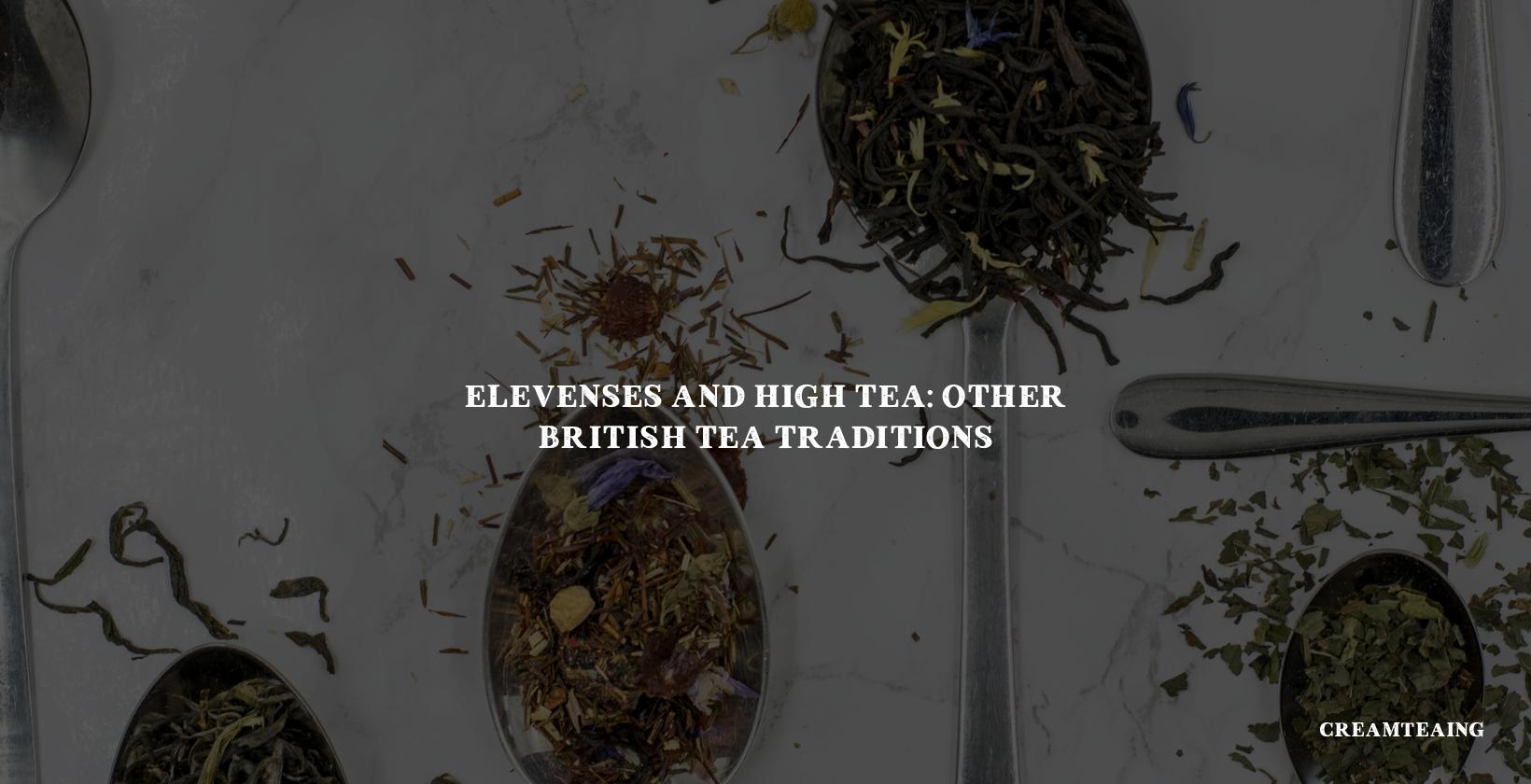
Elevenses and High Tea: Other British Tea Traditions
Elevenses is a quintessentially British snack time that's observed around 11 a.m. It's the perfect little break for when breakfast is a distant memory but lunch seems an age away. This tradition is all about pausing for a moment of relaxation and a light bite to keep the energy up for the rest of the day.
Typically, Elevenses might include a cup of tea or coffee and something small and satisfying to eat, like biscuits or a slice of cake. It's not as elaborate as afternoon tea; think of it as a mini recharge session. For many, it's a cherished ritual that breaks up the morning and provides a moment of calm.
High Tea: More Than Just Tea
Moving on to the late afternoon, there's another British tradition that often gets mixed up with afternoon tea, and that's High Tea. Despite what the name might suggest, High Tea is actually a more substantial meal and is sometimes called 'meat tea' because it traditionally includes a main dish.
High Tea typically takes place between 5 p.m. and 7 p.m. and can be considered an early dinner for some. It includes a variety of foods such as cold meats, pies, salads, and of course, tea. It originated during the Industrial Revolution when workers would return home hungry after a long day and needed something hearty to eat.
The 'high' in High Tea refers to the high dining tables where families would gather to eat, as opposed to the low, comfortable armchairs used for the more leisurely afternoon tea. It's a hearty, family affair, and while it may not be as fancy as its afternoon counterpart, it holds a special place in the heart of British dining traditions.
Both Elevenses and High Tea are integral parts of British culture, each serving a different purpose but equally cherished. They remind us to take a break, enjoy good food, and cherish the company we're with.
Further Reading and References on Cream Tea
For those who've enjoyed this journey through the delightful world of cream tea and are eager to dive deeper, there's a wealth of information waiting to be explored. Books like "The Ritz London Book of Afternoon Tea" by Helen Simpson offer a glimpse into the elegant tradition of tea time. For a more hands-on approach, "Afternoon Tea at Home" by Will Torrent provides recipes and techniques to recreate the cream tea experience.
Online, the National Trust website is a treasure trove of historical insights and tips on the best spots for cream tea in the UK. Food bloggers and tea enthusiasts on platforms like Instagram and Pinterest share their personal experiences and recommendations, perfect for visual inspiration.
For academic pursuits or sheer curiosity, the Oxford English Dictionary traces the etymology and usage of terms associated with cream tea, while scholarly articles in journals like "Food & History" delve into the cultural significance of this British custom.
Remember, the joy of cream tea extends beyond the scones and tea; it's about the history, the regional variations, and the shared moments. So, grab a book, click through a blog, or even start planning your next cream tea outing. The adventure is just beginning.

